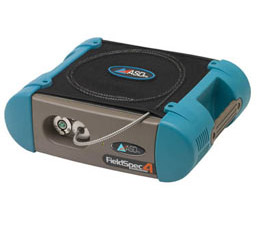Light and sound treatment for Alzheimer’s disease studied by Georgia Tech Emory
Treatment could potentially slow the progression of the disease.
ATLANTA – New discoveries in a study by researchers from Georgia Tech and Emory could pave the way for a therapeutic treatment for Alzheimer’s disease with the potential to slow the progression of the incurable disease.
The study published this month in the newspaper Alzheimer’s and dementia: translational research and clinical interventions investigated whether a twinkling lights and sounds technique – which has been shown to reduce Alzheimer’s disease in mice – is viable to try with humans.
This could lead to further studies examining the impact of treatment on patients with Alzheimer’s disease, determining that the method was “safe, tolerable and adherent” and finding preliminary indications that it “affects neural networks. and immune factors of the nervous system ”.
RELATED: CHECK OUT: If You’re Listed As An Organ Donor On Your License, Does That Include Your Brain?
“We looked at safety, tolerability, and adhesion, as well as several different biological results, and the results were excellent – better than we expected,” Annabelle Singer, Georgia Tech, told the school website.
Singer worked with researcher Emory James J. Lah on the study.
The study looked at 10 people with early or early stage Alzheimer’s disease and put them through “a combined visual and auditory gamma flicker for one hour per day for 4 or 8 weeks,” and all reported that this was the case. was tolerable.
“The results of this pilot study support the viability of long-term multisensory gamma frequency stimulation testing as a potential therapeutic approach,” the study concluded, adding that the results, “support the feasibility of continuing audiovisual gamma stimulation as a potential therapeutic approach. as a new, non-invasive, non-pharmacological approach to the treatment of people with AD. “
The treatment of the flicker itself, according to the Georgia Tech website, “stimulates gamma waves, manipulates neuronal activity, recruits the brain’s immune system and eliminates pathogens – in short, successfully fights a progressive disease that still has no cure.”
The study authors wrote, “We expect gamma frequency neuronal activity to be therapeutic in AD by altering immune signaling and stimulating or preserving plasticity in neural networks.”
The limited results of their study on this issue were positive, finding that the flicker method “enhanced functional connectivity between nodes” in what is known as the brain’s default mode network.
“We looked at default mode network connectivity, which is basically how the different regions of the brain that are particularly active during awake rest and memory, interact with each other,” Singer said on the website by Georgia Tech. “There are deficits in this network in Alzheimer’s disease, but after eight weeks [of treatment], we have seen a strengthening of this connectivity. ”
There was also some evidence that the treatment method helped trigger the brain’s immune response to Alzheimer’s disease.
Lah, of Emory, said that overall their study made “a very good case for a larger, longer study with more people.”




